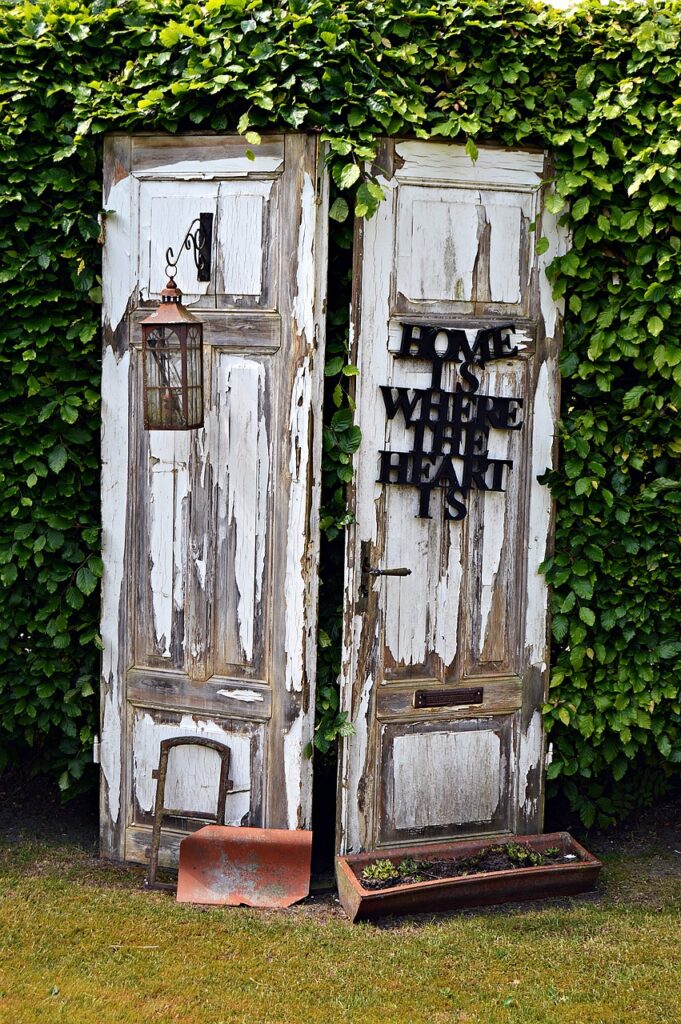In the realm of gardening, creativity knows no bounds. It’s a world where discarded treasures can find new life, adding a touch of uniqueness to any outdoor space. Welcome to the topic of upcycled garden art, where salvaged materials become the stars of the show, transforming your boring yard into a green gallery of repurposed wonders.
This will give new potential to your budget homes.
The Charm of Upcycled Garden Art
Imagine strolling through a garden where every corner tells a story, where old items are reborn as captivating focal points. Upcycled garden art is not just a trend; it’s a celebration of resourcefulness and ingenuity. It’s about turning trash into treasure, inviting a sense of playfulness and character into the outdoor canvas of your property.
Repurposed Furniture as Garden Accents
One man’s trash is another’s garden treasure. Take, for example, the humble wooden chair. Its days of supporting dinners or lounging have passed, but that doesn’t mean it’s destined for the landfill. Repurpose it into a charming plant stand by removing the seat and replacing it with a flower pot. The juxtaposition of natural greenery against weathered wood creates a delightful visual contrast that instantly elevates your garden’s aesthetic.

Old ladders, too, find a second act in the garden. Lean them against a fence or a tree and let cascading vines or potted plants add a touch of rustic elegance. These repurposed furniture pieces not only inject personality into your garden but also offer a nod to sustainability by giving a new purpose to items that would otherwise be discarded.
DIY Sculptures from Salvaged Materials
For the artistically inclined, the garden becomes a canvas, and discarded materials become the medium. So, transform metal scraps into quirky sculptures that add an industrial edge to your green space. Old bicycle wheels can become wind spinners, catching the breeze and creating a mesmerizing dance of movement.
Another DIY idea involves repurposing wooden pallets into eye-catching planters. Stack them creatively, add a splash of paint, and voila – you have a vertical garden that not only saves space but also serves as a conversation starter. The possibilities are limited only by your imagination and the materials you have on hand.
Vintage Window Frames and Doors: Bringing the Past to Life

Vintage window frames and doors can be repurposed to add a touch of nostalgia to your garden. Hang a window frame on a blank wall or use it as a backdrop for climbing vines. Also, old doors can be transformed into unique garden gates. For example, marking the entrance to your green sanctuary with a touch of history and character.
Also, don’t forget to use willow cuttings to form beautiful hedges for boundaries with style.
Tires: Rolling Towards Sustainable Gardening
Tires, notorious for their environmental impact, find redemption in the garden. Paint them in vibrant colors and stack them creatively to form tiered planters. The result? A playful and eco-friendly solution that turns an everyday item into a statement piece. Not only do tire planters add visual interest, but they also contribute to reducing waste by using materials that are difficult to dispose of responsibly.
To add them as a feature for your kids, just hang them on a tree to make a swing!

Parting Thoughts
Remember that beauty often lies in unexpected places. Your garden is a canvas waiting to be adorned with the stories of forgotten items given a second chance. Whether it’s repurposed furniture, DIY sculptures, vintage window frames, or tire planters, each piece contributes to sustainability and creativity.
So, free your imagination, and let the storm of upcycled garden art breathe new life into your outdoor space. It’s a journey where trash transforms into treasure, and your garden becomes a testament to the art of seeing potential where others see waste.

